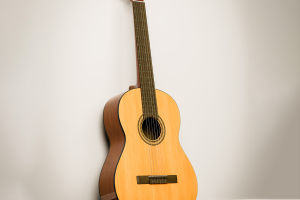Melodious Symphony
The cello, a magnificent string instrument, holds a vital role as the tenor or bass voice in the orchestra. Its resonant and robust sound captivates both musicians and audiences alike, making it a cherished choice for solo performances.
While the violin may boast elegance and grace, the cello's distinctively deep and lush tone allows it to excel in conveying heartfelt melodies and intricate emotions.
Undoubtedly, the cello is an indispensable component of numerous grand concert performances, enriching the orchestral landscape with its unique timbre.
Understanding the Cello:
Emerging from the Renaissance, the cello evolved from the viol (viola da gamba). The modern cello's size and structure were standardized around 1710.
Similar to other members of the string instrument family, the cello features four strings and possesses a range of approximately four octaves.
Notably, its pitch lies an octave below that of the viola, with the standard tuning being C-G-d-a. Typically notated in bass clef, the cello occasionally utilizes alto or treble clef in higher registers.
Each of the cello's strings offers distinctive characteristics. The first string, A, delivers a magnificent and commanding articulation, resounding with a rich and singing quality.
In contrast, the second string, D, exhibits a slightly hazier tone, lending a touch of mystery to the instrument's expressive palette.
The lower strings, G and C, provide a deep and resonant foundation, capable of withstanding the weighty demands of orchestral music.
The cello presents distinct challenges in its playing technique due to its size, string arrangement, and string length. The instrument's larger body necessitates a unique playing position, with the cello cradled slightly between the player's knees.
Playing the cello involves a combination of bowing with horsehair, finger plucking, and bow stick plucking, adding further complexity and versatility to its expressive capabilities.
Playing Techniques and Challenges:
Intonation stands as one of the most common hurdles for cellists. String players constantly grapple with intonation issues throughout their musical journey.
Accurate intonation serves as the bedrock for precise musical expression and serves as a crucial indicator of technical proficiency.
Two factors influence cello intonation: the concept of intonation by ear, and the mastery of left-hand techniques. The latter encompasses hand shape, vibrato, and overtones, presenting a range of complexities that demand dedication and practice.
To elevate one's playing level, a cellist must not only enhance their musical understanding and interpretation but also focus on refining intonation and technical prowess.
Intonation forms the foundation upon which good music is built, acting as a prerequisite for effectively conveying musical works. Through diligent and persistent study, cellists can strive toward their desired goals and unlock greater artistic potential.
Cello Maintenance:
Ensuring the longevity and performance of a well-crafted cello necessitates proper maintenance. With attentive care, these instruments can endure for generations.
Storing the cello in an environment with a relative humidity between 45-55% helps safeguard it against sudden fluctuations in humidity and temperature. Protecting the instrument's surface from rosin, dirt, and dust is essential.
Rosin, albeit slightly acidic, can corrode the finish if left for extended periods. Excessive build-up of rosin and dirt can impede the freedom of vibration in the instrument's belly and adversely affect string vibration.
Thus, it is crucial for players to diligently wipe off rosin residue and sweat daily, seeking professional assistance for more challenging cleaning tasks.


